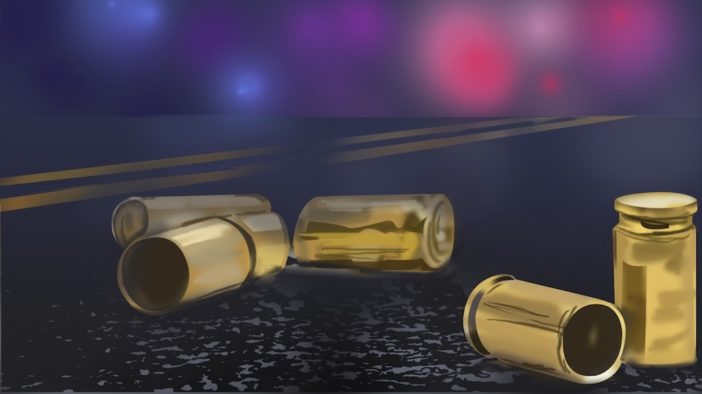The increase in the availability of so-called ghost guns is causing consternation among law enforcement, political leaders and gun regulation advocates. But what are they and why is the concern so high?
Click here to read The Specter of Ghost Guns in California.
Here is a primer:
What is a ghost gun?
Ghost guns are build-it-yourself firearms. You can order all the needed parts online, including kits with directions for building the gun, and have them delivered directly to your home.The parts have no serial numbers and buyers are not required to pass background checks.
Once the gun is assembled, you have a fully functioning firearm. It has been said by some that if you can build an IKEA desk, you can make a ghost gun. There are models for everything from a handgun, such as a Glock-style pistol, to a light semi-automatic AR-15-style rifle.
Kits usually require what’s called an 80 percent or blank lower receiver. This means the mechanism is 80 percent completed.
This is the foundation, the guts, of the gun. At 80 percent completion, a trigger, hammer and safety cannot not be attached, and as such the receiver avoids regulation. However, many blanks can be made operable with only a drill and file.
According to a New York Times story on ghost guns, “The sales pitches usually promise little work for the buyer. One online purveyor assured that ‘building time doesn’t take too long,’” adding, “Within an hour or two, you should be breaking it in at the range.”
The kits usually include links to YouTube tutorials and some have drill bits and jigs, which are essentially templates, called “gun assembly for dummies” by the New York Times.
According to the Everytown for Gun Safety advocacy group, the top five instructional videos on YouTube for building a ghost gun have drawn more than three million views.
Everytown aso said an AR-15 style build kit costs as low as $345. Legal AR-15s listed on guns.com begin at about $500 and up.
3D guns and beyond
Although still only a ripple in the ghost gun industry, 3D printed guns and related desktop milled firearms, may be the next big thing. The guns can be assembled using either plastic or metal or both.
According to Slate.com, “Now you can print untraceable AR-15s, AKMs, semi-automatic pistols, and more.
“In March, the design for a 100 percent homemade semi-automatic rifle that can shoot thousands of rounds, was released online. Called the FGC-9, for ‘f— gun control 9 mm,’ most of the gun is 3D-printed, while the rest includes inconspicuous parts available at hardware stores.”
Currently, the guns require technical proficiency, are time consuming and costly to construct, requiring machinery such as the printers and computer guided milling devices. But as technology leaps forward, the time, risk, and costs are dropping dramatically.
In 2018, USA Today wrote that a printer for a 3D plastic gun “can cost $5,000 to $600,000.”
In 2021, Slate.com reported “the recommended printer is about $250.”
The government has tried to restrict or ban publishing instructions to produce 3D printed firearms, but those efforts are still being argued in court. In the meantime, the information is available and gun advocates have created internet communities where they anonymously share information.
One memo from the Joint Regional Intelligence Center likened attempts to ban ghost gun information sharing to ineffective attempts to control illegally traded music, movie, or software files.
The first 3D gun, the .380 Liberator, resembled a Lego model when it was created in 2013, but it proved a working gun could be fabricated with a computer. It also spawned an industry.
Since Cody Wilson broke the mold, so to speak, and released detailed blueprints, the future of computer-generated guns, whether metal or plastic, was unleashed.
Most 3D gun files require the use of metal parts and there are laws banning all-plastic guns under the Undetectable Firearms Act of 1988 and subsequent renewals of the act.
What actions will be taken on 3D guns remains to be seen.
However, Robert Spitzer, a professor at SUNY Cortland told writer Jared Shelly on the Patriot One website, “If you’re going to regulate 3D-printed guns, the time to do it is before they become prolific, before the plans become prolific, and before they start to be in wider circulation. If nobody’s interested, then putting the clamps on these things now isn’t an issue.”
Caveats.
Home-made gun kits are intended for personal use and it is illegal for the gun builder to sell the weapons commercially. However, according to the Nolo Criminal Defense Lawyer website, the Gun Control Act of 1968 contains a loophole: “the law does not prevent an unlicensed person from later selling, giving away, or otherwise transferring a homemade firearm to another person as long as it was originally intended for personal use.”
In California, home gunmakers are required to apply for serial numbers if they intend to make guns. However, the law can be circumvented by buying parts that do not trigger the law and picking up the remaining unregulated parts from almost any hardware store.
A felon or person prohibited from possessing a gun is barred from owning a ghost gun. However, a seller is not required to conduct a background check for a person purchasing a completed gun or kit.
 Behind the Badge
Behind the Badge



